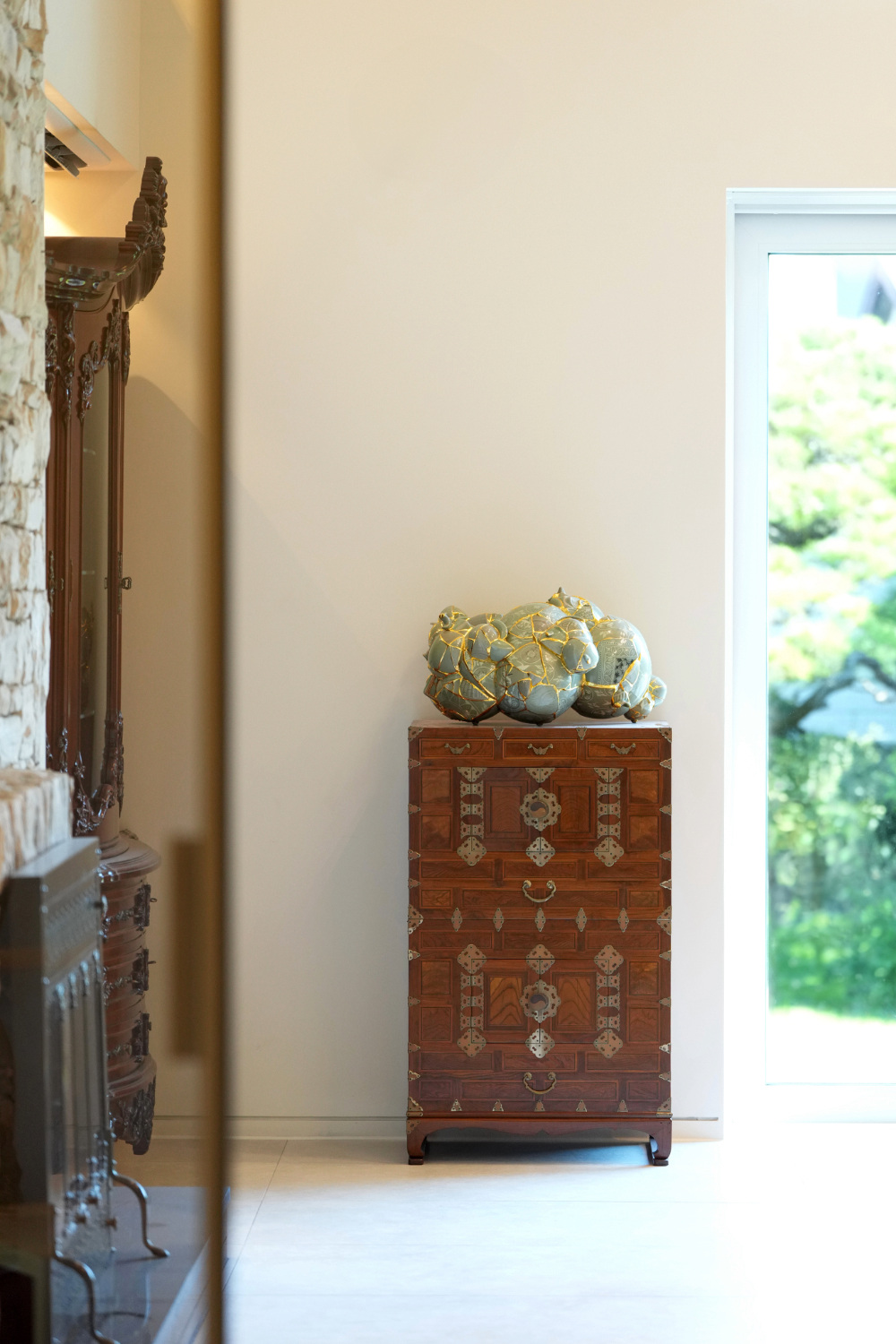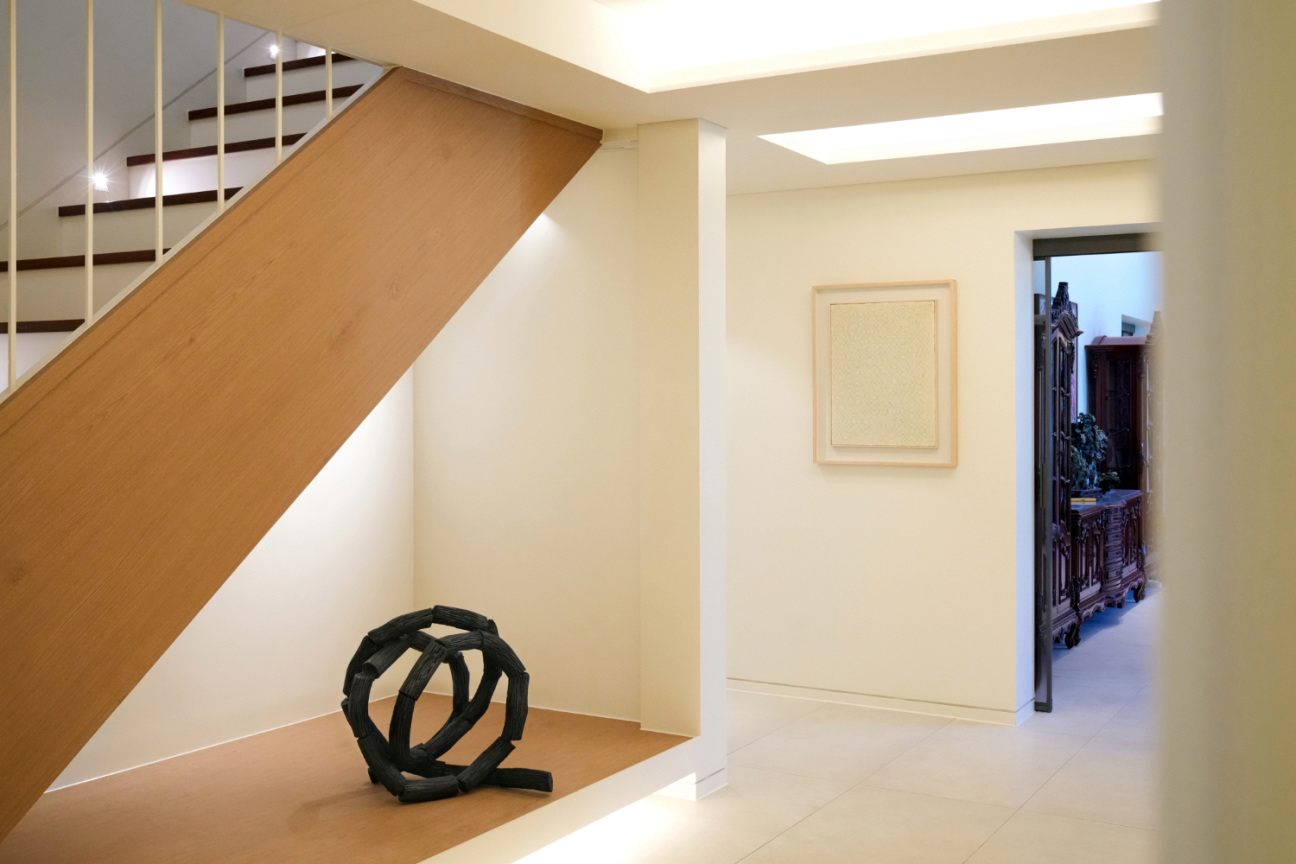
For Seoul-based attorney Jeongho Nam, immersion in the art market began as a necessity.
In the early 2000s, his parents' passion project of opening a gallery quickly became a family affair. It was a few years later, when his parents made the difficult decision to close the South Korean outpost, that Nam cemented his passion for the world of commercial art. Faced with the daunting task of liquidating their inventory, his education in the market was a trial by fire—one that propelled him into the world of collecting and has resulted in a trove of works by blue-chip and emerging artists alike.
As this month’s third edition of Frieze Seoul, which includes over 110 renowned galleries from Asia and beyond, comes to a close this Saturday, Nam offers his insight on the rapidly evolving influence of South Korea. Over the past three years, despite market fluctuation, Frieze Seoul has continued to grow, attracting larger and increasingly international audiences. As an avid attendant of the fair from its onset, Nam shares his reflections on the eccentricity, influence, and evolution of his local art scene.

What do you think makes the Seoul art scene distinct?
Seoul's art scene is distinct because, in this densely populated city, everything is fast-paced, including the exchange of ideas, fashion, and style. The world witnessed Seoul emerge as a global cultural powerhouse in just a short period. The character of this unique city inevitably expanded into the art scene. The immense growth and the newfound vibrancy of the Korean art market coupled with a surge of young consumers and audiences led to a whole new lifestyle involving fine art. The Korean art scene may still be in its nascency, but it is rapidly heading somewhere.
What do you think is the most underrated arts destination in the city?
I’d say SeMA (Seoul Museum of Art) Warehouse in Eunpyeong district is the most underrated. To provide a brief background, this place was built in 1962 and was mainly used as a warehouse to store reagents for the Korea Disease Control and Prevention Agency until around the 1990s. Every single feature has been preserved, even the shelves where reagents were stored. Thus, when exhibitions take place, which are often experimental arts, it really creates a one-of-a-kind eccentric ambiance.

Where does the story of your personal collection begin?
Collecting came naturally to me because of my family background. I spent my formative years in New York as a teenager and frequently accompanied my mother—an avid collector in her own right—on her gallery and exhibition runs in the city. One of the first projects at my current firm involved liquidating a significant inventory of artworks, which led me to visit many art fairs and auctions. During the project, I was overcome with a sense of excitement at the chance of reconnecting with the world of art in my adulthood. At this point, it became evident that I was bitten by the bug, and I have been personally collecting since.
How would you characterize your collection?
While everyone’s collection varies depending on the purpose, at the end of the day, art collecting is fundamentally a selfish endeavor. Some might collect because they find joy in discovering new talents, while some collect because they see art as an alternative investment asset. I am somewhere in between, and I would characterize my collection as a decent blend of blue-chip and emerging artists. I collect works by contemporary blue-chip artists ranging from the water drops by Kim Tschang-Yeul to iPad drawings by David Hockney, because I believe in their resiliency to market fluctuation. At the same time, I collect works by emerging artists that I find in art fairs who I believe will thrive, because following their career and appreciating their stylistic evolution is truly a unique experience.

Do you have a favorite memory of visiting Frieze?
On its very first edition, a work by Japanese artist Shimon Minamikawa from Misako & Rosen caught my attention. His work was not easily comprehensible at all, especially at first glance, but there was something that made me want to see it over and over, trying to understand why it is so difficult but I’m so drawn to it. I went back to see the work every single day during the fair, and on the last day—literally just five minutes before the closure of the first Frieze ever in Seoul—I called it mine. It is a main piece in my office today, and I cherish it.
Which work in your home provokes the most conversation from visitors?
A painting of his daughter by Kang Kang Hoon that I acquired from this year’s Art Busan. It provokes the most conversation and interest due to its immediate hyper-realistic features that people often mistake for a photograph. Ironically, however, through his painstaking body of work he is not merely tracing but actively reinterpreting what “realism” really is by stimulating viewers to feel the inner world of the subjects.

How has the local art scene influenced your collection?
In the last few years, a significant number of new galleries appeared in Seoul—including several major foreign galleries that opened branches—rejuvenating the scene. I’ve certainly benefited from this phenomenon. I was exposed to so many fresh talents, allowing me to expand my collection with a broader spectrum.
Which artist are you currently most excited about and why?
The Korean artist that I am most excited about right now is Keunmin Lee. Lee’s works are the reconciliation of his mental struggles, stemming from his borderline personality disorder, with his creative expressions of hallucinations, fears, and obsessions. Lee’s paintings often portray a grotesque entanglement of human organs, a crimson representation of his hallucinatory mindscape. The emotional urgency that permeates Lee’s body of works evokes visceral and intuitive reactions from the audience. Lee’s raw talent is undeniable and—perhaps most importantly to collectors—easy to recognize.

What factors do you consider when expanding your collection?
I have obviously experienced my share of missteps in my journey as a collector. The most notable mistake I made initially was collecting pieces for their visual “triggers.” Much like falling in love at first sight. This style of collecting may have been emotionally gratifying in the earlier stages of my relationship with the artwork, but I could not stay emotionally invested. I came to enjoy collecting on a much more meaningful level once I began collecting works from artists whose artistic evolution, as a continuous trajectory, resonates with my sensibilities.
What are the three must-see shows this month in Seoul?
First, Nicolas Party’s solo exhibition “Dust” at Ho-Am Art Museum where he showcases a variety of works, including site-specific installations covering the theme of the climate crisis. Second, Yoo Youngkuk “Stand on the Golden Mean” at PKM Gallery. Yoo is a first-generation Korean abstract painter and this exhibition presents his early works from the 1950s to the 1980s, probably the most tumultuous period in Korean history. Third, Do Ho Suh “Speculations” at Art Sonje Center. In this solo exhibition, Suh revisits his recurring theme of personal space, memory, and time through various mediums and experiments.










 in your life?
in your life?

